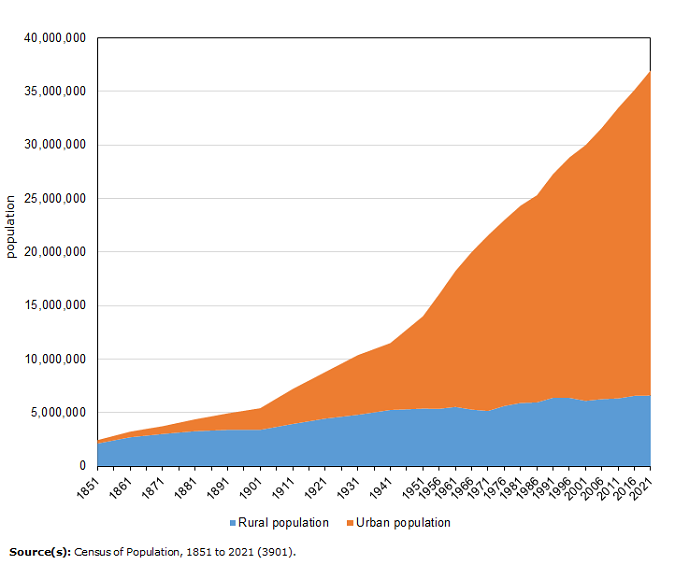Infographic 3
Population of urban areas growing faster than rural areas, although rural population still increasing

Infographic description
The title of the infographic is "Population of urban areas growing faster than rural areas, although rural population still increasing"
This is an area chart.
The X-axis shows the years from 1851 to 2021 by increments of 10 years from 1851 to 1951, and by increment of 5 years from 1951 to 2021.
The Y-axis shows the population from 0 to 40,000,000 in increments of 5,000,000.
There are two series in this chart. The orange area represents the urban population, and the blue area represents the rural population.
From 1851 to 2021, while still on the rise, the population of rural Canada has grown at a slower pace than in urban centres.
In 2001, the rural population was 6,098,883 people, while the urban population was 23,908,211 people.
In 2006, the rural population was 6,262,154 people, while the urban population was 25,350,743 people.
In 2011, the rural population was 6,329,414 people, while the urban population was 27,147,274 people.
In 2016, the rural population was 6,575,373 people, while the urban population was 28,576,355 people.
In 2021, the rural population was 6,601,982 people, while the urban population was 30,389,999 people.
Source: Census of Population, 1851 to 2021 (3901).
- Date modified: